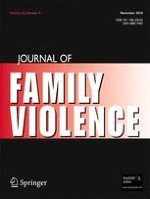01-11-2010 | Articles
Barriers in the Utilization of Domestic Violence Services Among Arab Immigrant Women: Perceptions of Professionals, Service Providers & Community Leaders
Published in: Journal of Family Violence | Issue 8/2010
Login to get accessAbstract
Ten focus group discussions were conducted with Arab American community leaders who had experience with victims of violence in the Arab American population and issues related to domestic violence. Community leaders were selected from an array of backgrounds, ranging from health and human service providers, legal and law enforcement service providers, religious and grass roots community organizations. Focus group discussions explored the role of personal resources, family, religion, culture and social support system in the utilization of domestic violence services by Arab immigrants experiencing domestic violence. In addition, issues related to personal, socio-cultural and institutional barriers in domestic violence service utilization were addressed along with identifying culturally competent policy strategies in reducing barriers for service utilization by Arab immigrants experiencing domestic violence.





